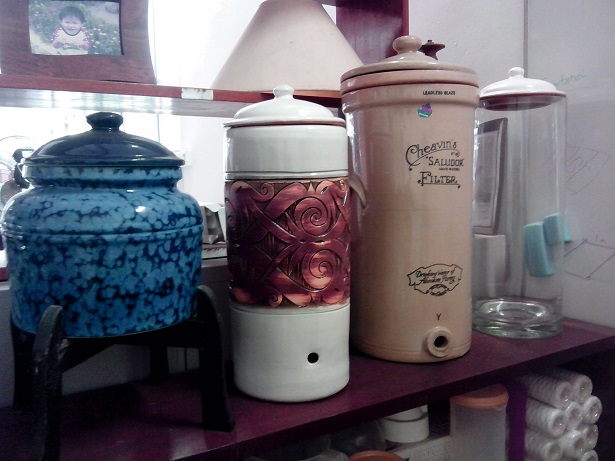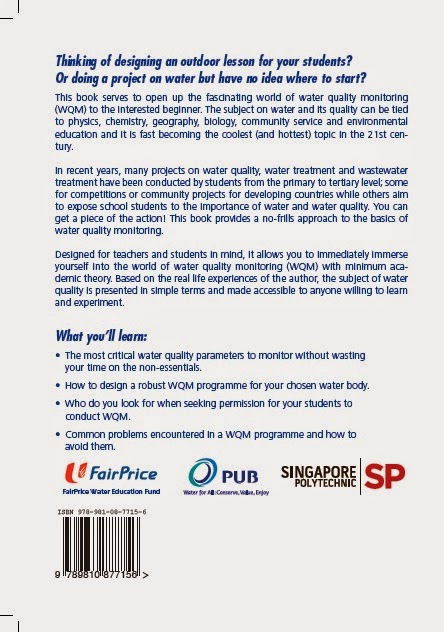I recently conducted water quality monitoring (WQM) workshop for teachers in a secondary school. Naturally, field work is part of the workshop's curriculum. However, I experienced a knotty issue in finding a suitable location in good old SG.
Here are some of the potential sites and why they were not selected.
 |
| Figure: Alexandra Canal - much of this upstream portion was fenced up and under construction |
 |
Figure: Alexandra Canal further downstream. Highly inaccessible with a a few metres down from ground level. No way I am climbing down there.
|
Heard about what a great place Berlayar Creek was. Finally took some time to check its suitability for field work.
 |
| Figure: Berlayar Creek is a nice mangrove stream leading to the sea. But it is not accessible without going through some serious mud and probably getting stuck. It sounds fun but may not be so appropriate for a group new to WQM and not used to bashing through the wild. In addition, I am not in favour of disturbing the ecology there by getting a group of humans fumbling through the place. |
West Coast Park is another nice place that I have been visiting for years, either for WQM or biodiversity survey. Accessible, safe yet natural enough. What's not to like about it?
 |
| Figure: Photo of West Coast Park taken a few years back. Guess what? This nice brackish water body is now fenced off for renovation! I don't have a photo of it now though. |
Ngee Ann Stream - one of my favourite locations of all time! Regrettably, I haven't been there for years and the last time I went, there were construction and development in one of the last bastions of nature in SG.
Regrettably again, I did not take any photos but unbelievably, the first part of Ngee Ann Stream (just opposite Ngee Ann Polytechnic) was hopelessly overgrown with vegetation! Without some heavy bashing or getting one wet in the stream itself, it was pretty impassable.
Another dead end to finding a place for field work!
Finally....
a place further than normally I would go with a big group....
Kallang River @ Bishan-Ang Mo Kio Park
The river itself is
mostly accessible. Toilets and shelters nearby. No need for bashing through. Some mud is unavoidable but not a problem. (Hey, this is field work, remember?)
Amazingly, there are even designated water sampling points!!! Stone paths leading down to the water edge clear of vegetation. Sounds too good to be true. (
Read to the end of this post for an unforseen problem - something no recce would have uncovered.)
 |
Figure: Bishan-AMK Park. This spot is not a designated WQM station but it is easy enough to access by the bank. Alternatively, a depth sampler can be released on the bridge to sample water right in the middle of the river.
 |
| Figure: Depth sampler. Quite bulky to carry around in its casing but immensely useful for sampling water from a bridge, jetty or in a boat. The yellow reel holds a rope which is marked along its length to measure the depth the sampling cylinder is submerged. |
|
 |
| Figure: 1 of the designated sampling spot in Bishan-AMK Park. Paved stones leading down to the water edge. |
 |
| Figure: WQM is not just for students. Teacher have to get their hands wet and dirty too. Testing the water sample for nutrients, hardness and other WQ parameters. The shade from this shelter was a bonus. |
If you have been reading this far, you deserve to know a problem we encountered when we did the actual field work. (I assume you did not jump straight to the end here just to find out.)
While we were thick in the middle of WQM by the water's edge, a security staff (Gosh, we have Cisco security in parks now!) came up to chase us off because Lower Peirce Reservoir was upstream of us and it was going to open its dam to release water into Kallang River. For our own safety, we have to climb up the slope beyond the safety markers which were some distance away from the water.
Too bad but safety always come first. We did manage to collect some water samples for further testing under the shade of shelters so it was not a total loss for us.



















